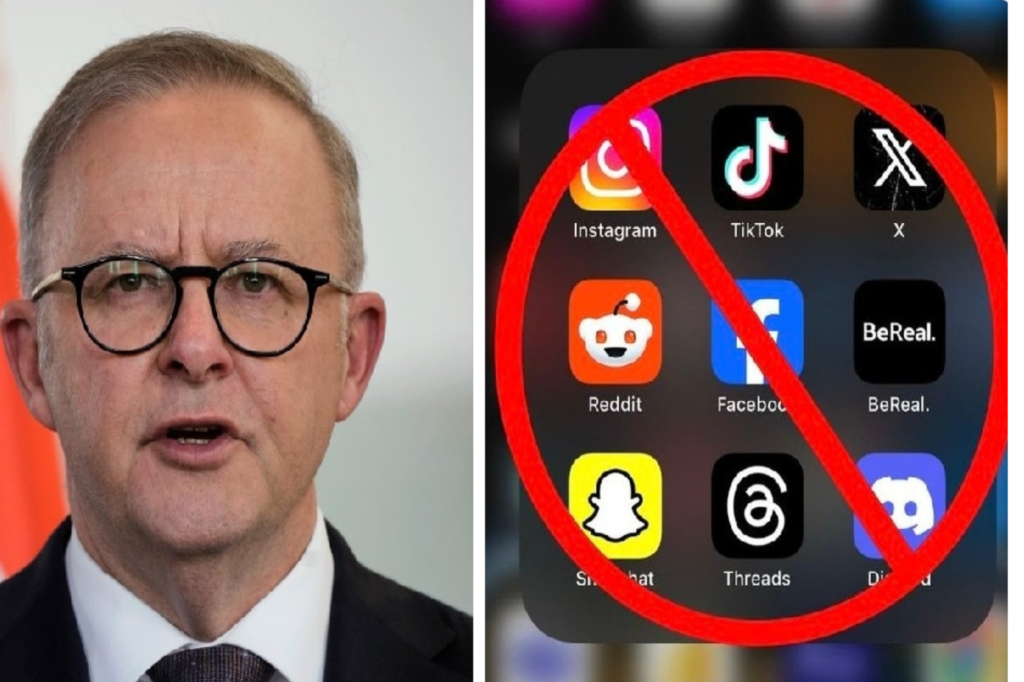
In a significant move to safeguard the well-being of minors, Australia has enacted a groundbreaking ban restricting access to social media for children under the age of 16. This policy shift comes at a time when social media usage among young users has been on the rise, raising concerns about their mental health, privacy, and exposure to inappropriate content. Recent studies have highlighted a disturbing trend: an increasing number of children are engaging with various platforms at younger ages, often without sufficient guidance or monitoring by parents or guardians.
The decision to implement this ban follows a growing body of research indicating that excessive use of social media can lead to negative outcomes for children, including anxiety, depression, and sleep disturbances. Additionally, there are apprehensions regarding online bullying and the potential for exploitation by malicious actors. These concerns have prompted stakeholders, including child advocacy groups and mental health professionals, to call for stronger regulations governing social media access for minors.
The Australian government has responded to these calls by establishing a legal framework aimed at protecting children in the digital landscape. The ban requires social media companies to verify the ages of their users, implementing robust mechanisms to prevent children under 16 from creating accounts or accessing content designed for older audiences. This initiative also encourages parents to engage actively in their children’s digital lives, fostering healthier online habits.
As Australia pioneers this innovative approach to digital child safeguarding, the global community watches closely. The effectiveness of the ban, as well as its potential to inspire similar policies in other countries, remains to be seen. By prioritizing the safety of young users, Australia is taking a decisive step in navigating the complex interplay between technology, youth, and societal responsibilities.
Reasons Behind the Ban
The recent decision by the Australian government to implement a ban on social media usage for children under 16 is rooted in a comprehensive analysis of the mounting concerns surrounding adolescent well-being. One of the primary factors influencing this regulatory measure is the alarming rise in mental health issues among young people. Research indicates that prolonged social media engagement correlates with increased anxiety, depression, and low self-esteem in adolescents. By monitoring their online interactions, authorities aim to mitigate these negative impacts and promote healthier developmental outcomes for children.
In addition to mental health considerations, the prevalence of cyberbullying has emerged as a significant issue contributing to the rationale for the ban. Studies have shown that children are often vulnerable to harassment and bullying through social media platforms, which can exacerbate feelings of isolation and despair. The Australian government recognizes the critical need to protect its youth from such detrimental experiences, advocating for a safer online environment where children can engage without the risk of harassment.
Furthermore, the impact of social media exposure on children’s development cannot be overlooked. Experts argue that excessive use of these platforms can hinder essential skills such as face-to-face communication, emotional management, and critical thinking. By restricting access to social media, the Australian government hopes to foster more meaningful interactions among peers and encourage children to engage in healthier, more constructive activities. The initiative represents a proactive approach to safeguarding the future generation, with research and community feedback guiding this vital legislative change.
Government’s Perspective
The Australian government has taken a resolute stance in implementing a groundbreaking ban on social media usage for children under the age of 16. This decisive action is rooted in the increasing concerns regarding the potential impacts of social media on the mental health and safety of young individuals. According to policymakers, the initiative intends to create a safer online environment for children, reducing exposure to harmful content, cyberbullying, and other risks associated with social media platforms.
Public health officials have echoed these sentiments, highlighting that evidence has suggested a correlation between social media usage and rising rates of anxiety and depression among youth. Dr. Sarah Thompson, a leading child psychologist, stated, “We cannot ignore the overwhelming data indicating that early exposure to social media can lead to detrimental effects on a child’s mental well-being. This ban is a crucial step towards fostering healthier development in our youth.” Such statements underline the urgency of addressing the pervasive issues linked to social media and the need for protective measures.
Moreover, the government anticipates that this legislative change will promote healthier habits among children by encouraging offline interactions and physical activity. As Minister for Family Services, Mark Johnson, remarked, “We are committed to prioritizing the safety and mental health of Australian children. By limiting their access to social media platforms until they are older, we are investing in their future.” The holistic approach taken by the government aims to create a balanced digital lifestyle that safeguards young Australians while still allowing them to engage with technology in a healthier manner when they are developmentally ready.
Reactions from Parents and Communities
The implementation of Australia’s groundbreaking ban on social media for children under 16 has elicited a wide array of reactions from parents, educators, and community leaders. Many parents have expressed strong support for the initiative, viewing it as a necessary measure to safeguard their children’s mental health and well-being. They argue that the pressures and potential harms associated with social media can significantly affect young individuals, leading to issues such as anxiety, depression, and cyberbullying. Supporting parents contend that restricting access ensures a healthier developmental environment, allowing children to focus on face-to-face interactions and educational pursuits. They are particularly vocal about their hope that this ban might foster more constructive social habits among youths, encouraging them to engage in outdoor activities and reading.
Conversely, not all responses have been favorable. Some community leaders and educators have raised concerns regarding the implications of the ban on children’s rights and freedom of expression. They argue that social media platforms can serve as important tools for self-expression, creativity, and communication in today’s digital age. Critics emphasize that rather than imposing restrictions, efforts should be directed towards educating children and parents about safe social media practices. They contend that teaching responsible and mindful use of technology may prove more beneficial than an outright ban, which could lead to deprivation of social interactions that are a significant part of modern discourse.
This divide reflects deeper societal concerns about balancing safety and the liberties of young individuals. Stakeholders on both sides acknowledge the need for protecting children from online dangers but disagree on the methods to achieve this objective. The ongoing discourse continues to shape the landscape of social media use among the youth in Australia, prompting broader discussions about digital rights, education, and community responsibility.
Impact on Social Media Companies
The recent announcement by the Australian government to impose a ban on social media access for children under the age of 16 has prompted a notable reaction from leading social media companies. As industry giants grapple with both compliance and potential backlash, initial responses have varied significantly, highlighting the complexity of the issue at hand.
Several platforms have swiftly issued statements expressing their commitment to safeguarding user privacy and well-being. Facebook, Twitter, and Instagram are now considering modifications to their user verification processes to ensure adherence to the new regulations. This could entail more robust age verification systems, deploying advanced algorithms to detect unsupervised access by minors, and possibly integrating third-party verification services. Such changes will not only aim to adhere to legal frameworks but will also strive to foster a more secure digital environment.
Moreover, this ban presents a unique challenge for social media companies, particularly those whose business models are heavily reliant on engagement from younger audiences. Brands are increasingly viewing the Australian market through a lens of necessary adaptation. The potential loss of a significant demographic necessitates a diversification of their strategies, both in marketing practices and platform functionalities. Companies might shift their focus towards content tailored for adult users, while exploring alternative growth strategies that do not involve catering to children.
In anticipation of the impending change, social media firms are also likely to engage in discussions with lawmakers and regulatory bodies to lobby for clearer guidelines on the implementation of these restrictions. As these platforms navigate through this uncharted territory, their capacity to adapt will be crucial in determining their continued success within the Australian landscape. The evolving regulatory landscape may lead to a paradigm shift in how social media platforms operate and engage with different audience segments, setting a precedent for other countries to follow.
International Implications and Comparisons
Australia’s recent decision to implement a ban on social media for children under 16 marks a significant development in the ongoing global conversation about children’s digital rights. This initiative invites comparisons to similar regulations enacted in other nations, notably in the United Kingdom and several countries across Europe. In the UK, for instance, the government has made strides toward safeguarding children online through the Online Safety Bill, which requires social media platforms to adopt stringent measures to protect underage users from inappropriate content and potential exploitation. This legislative approach reflects a growing recognition of the need to establish boundaries around children’s internet use.
In parts of Europe, notably in countries like France and Spain, there have been proactive steps to manage children’s interaction with social media. France has implemented laws that restrict screen time for younger children and require educational initiatives that teach digital literacy. Similarly, Spain has promoted awareness campaigns aimed at ensuring that minors engage with technology safely and responsibly. These measures resonate with Australia’s latest ban, highlighting a broader commitment to prioritize the welfare of younger generations in the digital landscape.
The discourse surrounding these initiatives signifies that Australia’s ban is part of a wider shift wherein countries are increasingly recognizing the importance of regulating digital environments for children. Nations are exploring various frameworks for balancing the benefits of technology against its potential perils, particularly in the face of growing concerns about cyberbullying, addiction, and exposure to harmful content. While the approaches may differ in execution, the underlying objective remains consistent: to foster safer online spaces for children and promote a healthier approach to social media use worldwide.
Future of Youth Engagement on Social Media
The recent ban on social media for children under 16 in Australia raises significant questions about the future of youth engagement with digital platforms. As children are restricted from accessing popular social media sites, their interaction with technology is poised to undergo transformative changes. Such a regulatory move may influence not only how they consume content but also how they create and share it. With the ban, young users might turn to alternative platforms that are more regulated or specifically designed for their age group, potentially leading to a surge in educational and creative applications. The emphasis could shift towards platforms that encourage learning and collaboration, fostering an environment where technological skills are developed under safer conditions.
The restrictions might also prompt a broader conversation about media literacy education. As the digital landscape evolves, there will be an increased necessity for initiatives that teach youth how to navigate technology responsibly. With a formal ban in place, educational institutions and parents will be called to action to equip children with the skills necessary to critically assess online content. This focus on media literacy is anticipated to help young users comprehend the implications of digital interactions, ultimately shaping a generation that is more conscious of the information they encounter and share.
Furthermore, the ban may alter the dynamics between children and social media platforms, with reduced direct engagement potentially encouraging stronger offline relationships. Children might find themselves in enhanced social environments where face-to-face interactions, physical activities, and traditional hobbies regain their prominence. Consequently, this transition might foster a new approach to friendship and communication, emphasizing the importance of real-world connections amidst the digital age. Future trends in youth engagement on social media will undoubtedly reflect these changes, as society navigates the balance between technological engagement and healthy childhood development.
Expert Opinions and Predictions
As Australia moves forward with the ban on social media for children under 16, a variety of experts have provided their insights into the potential impacts of this groundbreaking legislation. Child development specialists are optimistic that the prohibition could lead to significant shifts in children’s behaviors. Many believe that reducing social media exposure will foster more real-world interactions, enabling children to develop essential social skills that digital communication often hampers. This shift may also encourage outdoor activities and hobbies that promote physical well-being, crucial for a demographic increasingly drawn to screens.
Sociologists have noted the pre-existing concerns regarding the negative influence of social media on youth mental health. They argue that children frequently face bullying, peer pressure, and unrealistic comparisons through social media platforms. With the ban in place, it is anticipated that children will experience decreased anxiety and improved self-esteem as the constant barrage of curated online personas diminishes. However, experts caution against idealizing the outcomes, highlighting that a complete withdrawal from digital spaces is improbable. Children will still be exposed to the digital culture through peers and entertainment sources, necessitating discussions around responsible digital citizenship.
Digital safety advocates predict the ban could pose challenges as well. While they support measures aimed at protecting children, they express concerns about creating a digital divide. Children who continue to have access to social media may develop heightened risk factors. Such disparities may further exacerbate inequalities among socio-economic groups, fostering feelings of exclusion among those unable to engage with their peers online. Thus, the upcoming months will be critical as researchers, educators, and policymakers monitor trends in children’s behavior and wellbeing to better understand the broader implications of this ban.
Conclusion and Next Steps
Australia’s recently implemented ban on social media for children under the age of 16 marks a significant step towards safeguarding young users in a digital landscape fraught with risks. This legislation acknowledges the mounting evidence indicating that exposure to social media can lead to adverse mental health effects, cyberbullying, and other detrimental outcomes for minors. With over 40% of children engaging on various social media platforms, the urgency of protecting this vulnerable demographic is evident. The ban emphasizes the need for responsible online behavior and reinforces the importance of parental supervision.
As this pioneering measure unfolds, it is crucial for stakeholders—including parents, educators, and policymakers—to remain engaged and support the initiative. Research into the impacts of social media and the effectiveness of the ban will provide valuable insights for future regulations. Advocacy groups can play an essential role in raising awareness about the dangers of social media and lobbying for comprehensive digital safety reforms. Community initiatives focused on educating both children and parents about safe online practices are also vital.
Moving forward, fostering dialogue between various stakeholders is essential. Schools can introduce programs that address digital literacy, teaching students the importance of using technology responsibly. Furthermore, parents should be encouraged to actively participate in discussions about online behavior with their children. This collaborative approach ensures that the message of online safety reaches younger users effectively.
In summary, while the ban on social media for children under 16 in Australia is a commendable beginning, ongoing efforts are necessary to create a safe digital environment. Together, through research, advocacy, and community engagement, we can work towards a future where children can navigate the online world securely and healthily.



